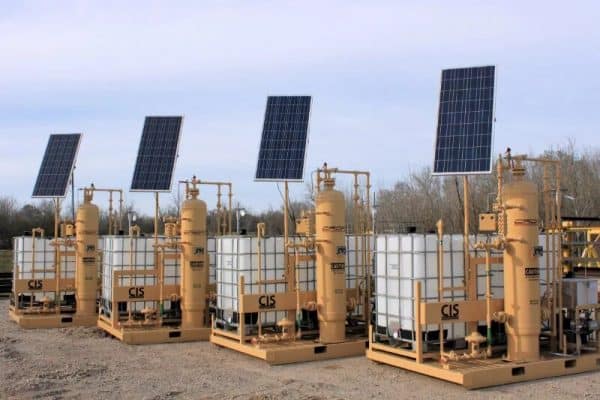What is Natural Gas?
Natural-gas processing is a complex industrial process designed to clean raw natural gas by separating impurities and various non-methane hydrocarbons and fluids to produce what is known as pipeline-quality dry natural gas.
Natural-gas treatment begins at the wellhead. The composition of the raw natural gas extracted from producing wells depends on the type, depth, and location of the underground deposit and the geology of the area. Oil and natural gas are often found together in the same reservoir. The natural gas produced from oil wells is generally classified as associated-dissolved, meaning that the natural gas is associated with or dissolved in crude oil. Natural gas production that is naturally occurring and not associated with crude oil production is classified as “non-associated” or “free gas”.
Why Do We Process Natural Gas and How?
The natural gas used by consumers in its final state varies greatly than the natural gas underground. The final product contains almost pure methane, but raw natural gas contains a variety of impurities. Impurities include carbon dioxide, hydrogen sulfide, water vapor, oil, nitrogen, hydrates, and heavier hydrocarbons, consisting mostly of ethane, propane, butane, and pentanes. While some gas treatment is done at the well site, the complete processing takes place at a gas processing plant. Removal of all or most impurities is required before entering the pipeline. Although natural gas processing has several steps, the main processes include separation, carbon dioxide and hydrogen sulfide removal, dehydration, and NGL recovery.
After leaving the gas well, the first step in processing natural gas is removing oil, water, and condensates. This step is typically done at the well site. First, heaters and scrubbers are used to prevent the temperature of the gas from dropping too low and remove large-particle impurities, respectively.
Separation
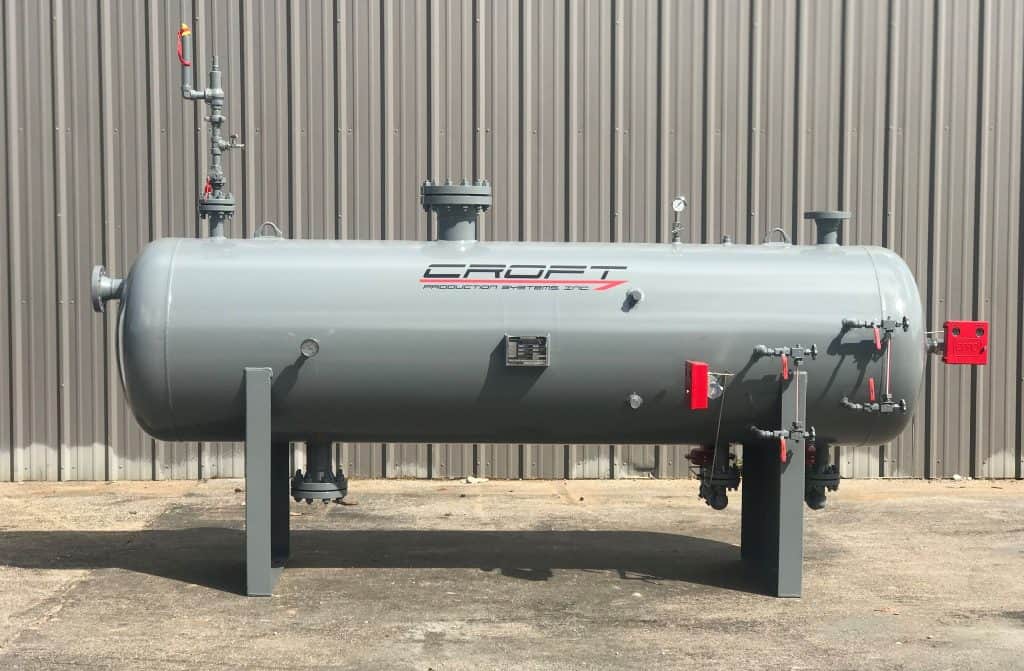
Second, the oil is separated from the gas with a separator. Separators come in a variety of configurations, including two-phase separators, three-phase separators, horizontal separators, and vertical separators. The separator consists of a closed tank that separates the liquids and solids by the force of gravity. When gravity alone does not separate the two, separators use pressure to cool the gas, then moves through a high-pressure liquid at a low temperature to ‘knockout’ any remaining oil and a portion of the water. CROFT offers a variety of new and refurbished separators, and our engineers can help you find the most efficient configuration for your operation.
H2s & Co2 Removal
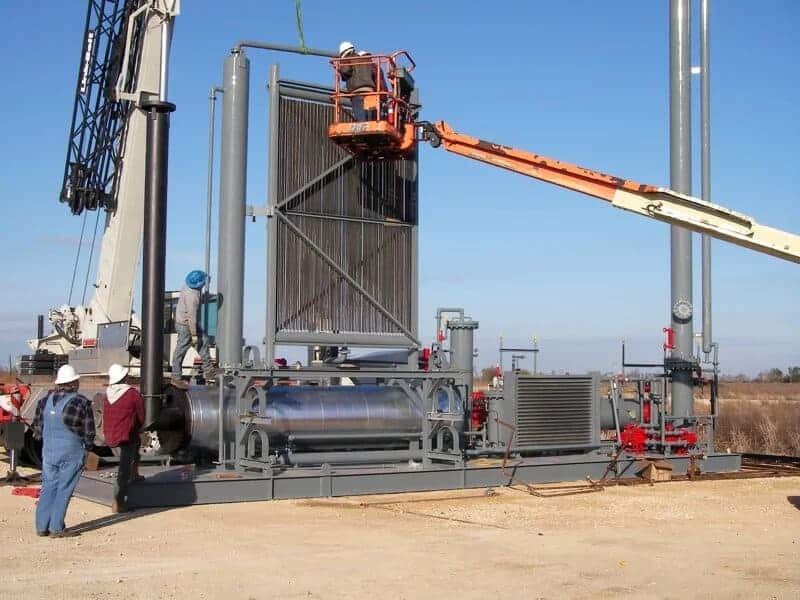
Once the oil, water, and condensates have been removed, the carbon dioxide and hydrogen sulfide must be removed if present. This step is known as ‘sweetening’ the gas due to sulfur’s scent, or “sour” gas. This step is important because hydrogen sulfide is extremely harmful, lethal, and corrosive. Required preventative measures are put in place by OSHA, Occupational Safety and Health Administration, and NSC National Safety Council. At the same time, regulations and product specifications are made by NACE International, the National Agency of Corrosion Engineers, to prevent its effects. Croft’s GSS, Gas Sweetening System, removes both CO2 and H2S. This is done by first removing all H2S, followed by the removal of CO2 up to the Amine System’s ability. If any CO2 remains, it will be removed during the next cycle. The Amine System can also be used to remove high levels of H2S. If CO2 removals not needed, our Chemical Injection System is a great option for strictly removing H2S by means of injecting H2S scavenger into the system.
Natural Gas Dehydration
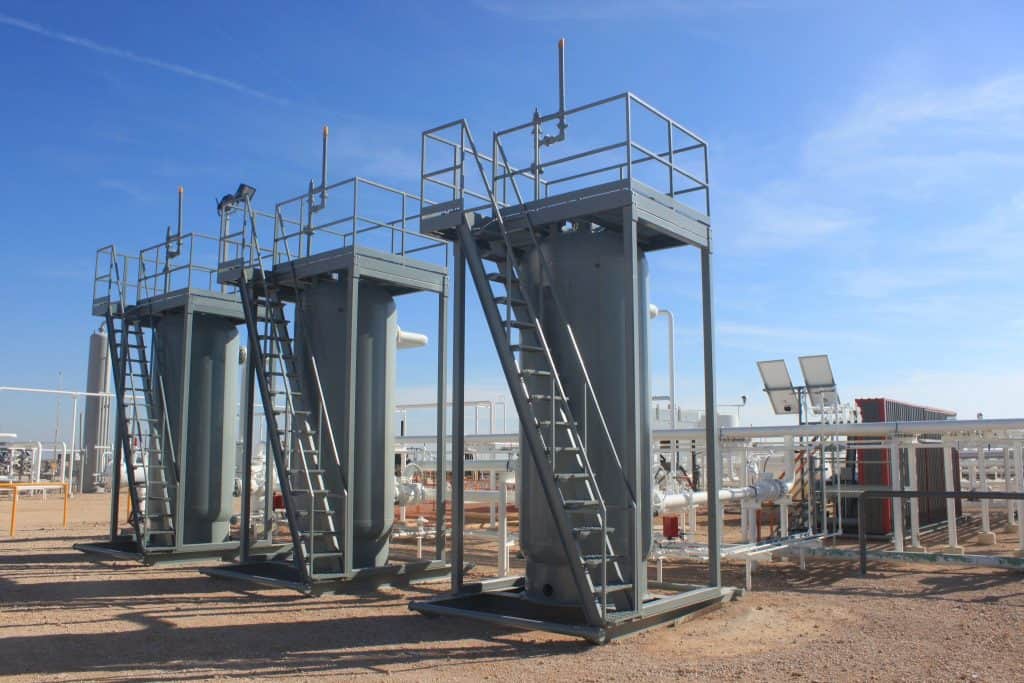
After hydrogen sulfide and carbon dioxide has been removed, the natural gas must be dehydrated. Natural gas dehydration is imperative to remove the excess water, which creates hydrates, corrosion, and freezing issues and does not meet pipeline requirements of 7/MMcf. Water is removed in the form of water vapor and can be done through absorption or adsorption. Adsorption is the collection and condensing of water vapor on the surface, which is done with Croft’s PDS, Passive Dehydration System, which is a dry desiccant dehydrator. Absorption, completed with a Glycol unit or a TEG, removes water vapor by a dehydrating agent. Unlike the Glycol unit, Croft’s PDS has zero emissions, is not carcinogenic and is environmentally friendly.
The removal of mercury is not always necessary, but high amounts cause corrosion of aluminum heat exchangers and environmental pollution. If needed, the two forms of removal are regenerative and nonregenerative processes. The regenerative process uses sulfur-activated carbon or alumina, while nonregenerative uses silver on a molecular sieves.
Nitrogen is an inert gas, non-flammable, and lowers the temperature of natural gas. Natural gas’s gross heating value must be between 900-1200 British thermal units (btu). Pure natural gas is almost all methane, with a heating value of 1010 btu. When nitrogen is present in pure natural gas, it lowers the gross heating value too much to meet pipeline requirements. When this occurs, nitrogen must be removed, which is known as nitrogen rejection.
NGL Recovery
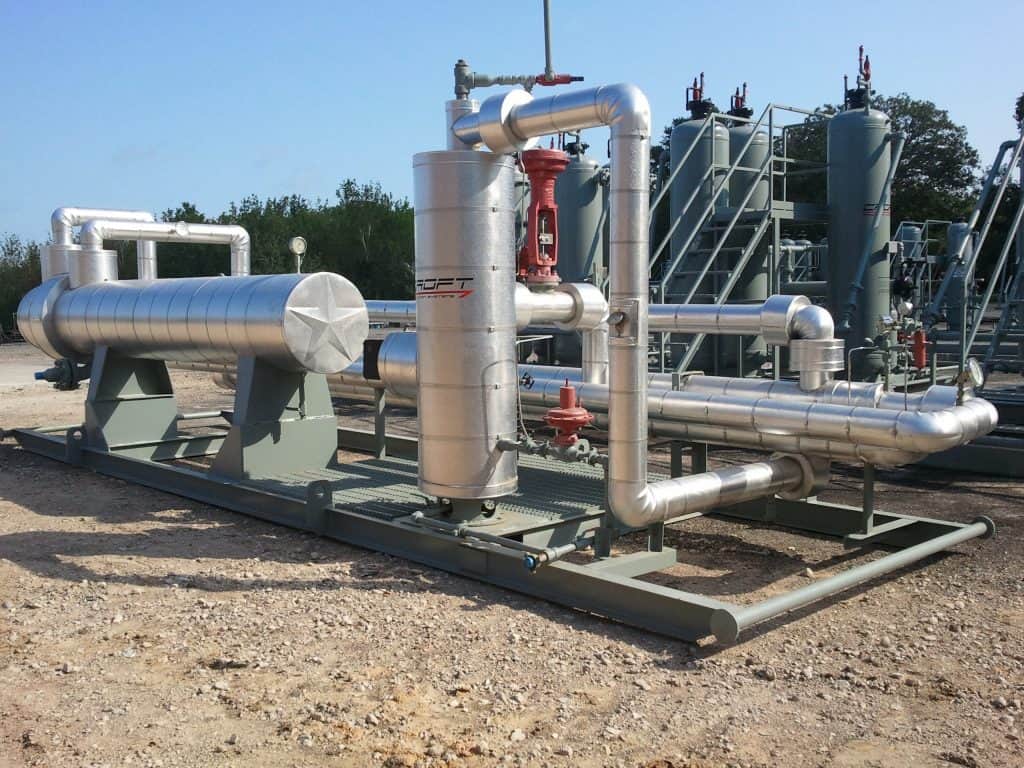
NGLs or natural gas liquids are heavy hydrocarbons, including ethane, propane, butane, iso-butane, and natural gasoline. These natural gas liquids have a high BTU and are not pipeline quality, but they are a very valuable by-product when sold separately. The process of removing NGLs is known as NGL recovery. The number of NGLs measured by gallons per 1,000 cubic feet (gpm), with 1-2 GPM being ‘lean’ or dry, and > 4 gpm being ‘very rich’ or wet. The first step of NGL Recovery is to remove all NGLs from natural gas. This can be done with CROFT’s Joule-Thomson System, which removes heavy hydrocarbons and hydrates. They are removed by cooling the gas temperature, which turns the vapor into liquid for easy removal. The ‘richer’ the NGLs, the higher the need for the JTS, which also lowers the gross heating value and removes hydrates. After the NGLs are removed, they are separated into individual products, known as fractionation. Separated NGLs have a higher selling value and can be used in many ways. The equipment used to separate the ethane, propane, butanes, and pentanes by volatility is known as the fractionator train.
Check out the Croft Production Systems customizable product line below!

*UPDATED MAY 2020 BY A CROFT REPRESENTATIVE
References:
- 2011, “Processing Natural Gas,” NaturalGas.org. http://naturalgas.org/naturalgas/processing-ng/
- Kidnay, A., McCartney, D., Parrish, W., 2011, “Fundamentals of Natural Gas Processing,” CRC Press, (2), 319-321.
- Hyne, N., 2001, “Nontechnical Guide to Petroleum Geology, Exploration, Drilling, and Production,” PennWell Books, (2), 10-13.
- Manning, F., Thompson, R., 1991, “Oilfield Processing of Petroleum Volume One: Natural Gas,” PennWell Books, 1, 339-340.










